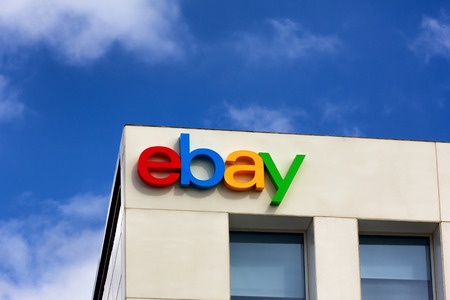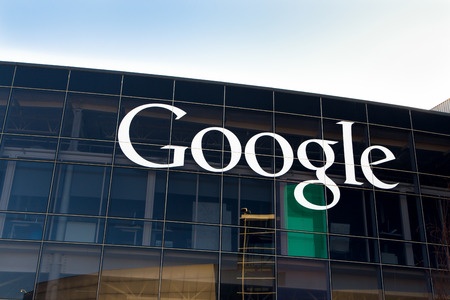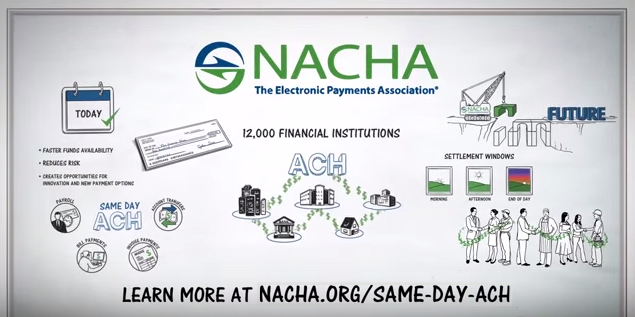payments
Kabbage, LendingPoint to Offer Real Time Funding Via Push Payments
April 9, 2018 Kabbage and LendingPoint each separately announced today that they will soon be able to get funds into their customers’ business accounts instantly and 24/7 via their pre-existing bank debit card. Hopes for this are not brand new. Last October, OnDeck announced a partnership with Ingo and Visa that would provide this convenience to borrowers, although this has not yet come to fruition, according to an OnDeck spokesperson. This is also not Kabbage’s first foray into real-time loan funding.
Kabbage and LendingPoint each separately announced today that they will soon be able to get funds into their customers’ business accounts instantly and 24/7 via their pre-existing bank debit card. Hopes for this are not brand new. Last October, OnDeck announced a partnership with Ingo and Visa that would provide this convenience to borrowers, although this has not yet come to fruition, according to an OnDeck spokesperson. This is also not Kabbage’s first foray into real-time loan funding.
“We launched [a real-time loan product] through the debit network three years ago and we were really excited about the results,” said Kabbage co-founder Kathryn Petralia . “Our customers really liked it, [but] our challenge was that we couldn’t get broad enough coverage. Only a small percentage of our customers were able to use it…so we’re excited about our partnership with Ingo because it gives us the ability to broaden this to about 90 percent of our customers.”
Kabbage has entered into a relationship with Ingo and has plans to make this service available to customers this summer. One might wonder why, on a weekend, a merchant needs money and can’t wait until Monday?
 “Our customers are always looking to expedite the process,” Petralia said, “not because they’re desperate for cash, but because they really are desperate for time, and they don’t want to spend a bunch of time reconciling their bank accounts [and] making sure the funds have arrived. This is a much cleaner way for them to get access to capital.”
“Our customers are always looking to expedite the process,” Petralia said, “not because they’re desperate for cash, but because they really are desperate for time, and they don’t want to spend a bunch of time reconciling their bank accounts [and] making sure the funds have arrived. This is a much cleaner way for them to get access to capital.”
Meanwhile, as part of an announcement by LendingPoint today, the company said that later this year it will be able to “instantly disburse loans to approved borrower accounts through their debit cards, 24/7/365.” This will be facilitated through the TabaPay platform, which also enables LendingPoint borrowers to use their debit card to make loan payments.
eBay to Part Ways With PayPal, Bring Payments in House
February 2, 2018 We all must leave our parents one day and branch out on our own.
We all must leave our parents one day and branch out on our own.
However, this is probably not what PayPal Holdings Inc. had in mind.
The company is surrendering its duties as the primary payment option for its former parent, eBay Inc.
On Wednesday, eBay announced that Adyen, a Dutch company, will take over as the main payments processor when the current deal with PayPal expires in mid-2020. The change will allow the platform to host more of the transaction process in house.
eBay was motivated to make a change by the desire to intermediate the transactions taking place on its site and to allow buyers and sellers to complete their business within one website (eBay).
“As a leading global commerce company, eBay believes that payments intermediation is strategically important to improve the buyer and seller experience on its platform and will enable the company to further innovate on behalf of its customers,” the company said in its statement. “In a rapidly changing and competitive e-commerce landscape, shoppers expect to be able to both shop and checkout on the site on which they transact. As eBay intermediates payments, shoppers will be able to complete their purchases within eBay.”
However, this will not be a total break between the two companies that were once attached at the hip. PayPal will remain an option for eBay users until the summer of 2023.
PayPal’s stock took a nosedive following the news. As of 9 a.m. on Friday in the company’s HQ of Palo Alto, CA. the stock had slid from $85.32 on Wednesday morning, down to $77.25 with brief rebounds along the way.
While the move may not have done any favors for PayPal’s stock, eBay is optimistic that it will be a boon for merchants that use the platform to sell their wares.
According to the release, most sellers can expect their costs of payments processing to be reduced after completing the transition. They should also enjoy a “simplified pricing structure and more predictable access to their funds.”
Amazon Wants to Add Fintech Companies to its Shopping Cart
April 5, 2016
It’s Amazon’s turn to go shopping and it wants to buy fintech companies.
The e-commerce giant just turned the heat up on fintech and said that it will look to acquire startups as the dust around valuations settles. It made its foray into payments in 2013 with ‘Pay with Amazon’ a payment tool integrated on other websites for Amazon customers. Now, the service has 23 million users worldwide.
On Monday, (April 4th), at the Money 2020 Summit in Copenhagen, it announced that it will extend the service to third party merchants hosted on its marketplace.
“The Amazon Payments Partner Program provides Partners with the tools and resources needed to extend the trust and convenience of the Amazon experience to their merchant customers,” Patrick Gauthier, vice president of Amazon Payments, said in a press release. Which is another way of saying that wherever merchants go, Amazon will follow.
This announcement comes after Square released a similar service last week (March 30th) with APIs of its payment integration tool for merchants to use on their sites. Amazon is simultaneously stepping into the turfs of PayPal and Visa while threatening smaller but strong rivals like Square and Stripe. As far as customer acquisition goes, the company doesn’t have to look beyond its own marketplace and what seems like a small step for Amazon could be a giant leap for the industry. The company coincidentally also makes loans to its own customers, just like both Square and PayPal.
Startups in payments and lending are making hay while the sun shines bright. And in this case, that’s nearly half of all the fintech dollars invested. If Amazon is hunting for a good deal, it might be a bit longer in what still seems to be a seller’s market — there are over 152 fintech startups deemed ‘unicorns’ or having valuations of at least $1 billion.
But maybe Amazon is the corrector the market needs?
Google Ditches Debit Card for P2P Transfer
April 1, 2016
Google will kill its prepaid debit card this June to re purpose it as a P2P payments app.
Wallet Card, which was launched in November 2013 lets users make payments at ATMs, banks and any business that accepts MasterCard Debit.
The project faced multiple roadblocks from the start when it was leaked way back in November 2012, shelved plans in May 2013 before its subsequent launch later that year.
As Android Pay is becoming Google’s mainstay for in-app purchases and third party payments, it makes little sense to continue two similar products. The company is referring Wallet users to American Express and online bank Simple by offering a sign up bonus.
“After careful consideration, we’ve decided that we’ll no longer support the Wallet Card as of June 30. Moving forward, we want to focus on making it easier than ever to send and receive money with the Google Wallet app”
Last month (February 23) Google shut down its financial products comparison tool, Compare.
Square Baits New Merchants with Payments
March 30, 2016
Jack Dorsey wants Square to be a one stop shop and is baiting merchants with its new payment integration tool.
Square launched new API tools on Wednesday (March 30) for online and retail stores who “with few lines of codes can seamlessly integrate Square into the checkout process.” The company is going after payment giants like PayPal, Braintree and Stripe alluring merchants with an easier-to-use payment tool and is priced similarly at 2.9 percent and 30 cents per transaction.
For its erstwhile customers, picking Square over rivals makes sense given the integration between online and offline sales and for the businesses that do not use Square, the company wants to handcuff them.
At the time of founding, Square’s primary business model was a merchant-first approach. It went after 27 million micro merchants who hitherto were invisible to incumbent players in the space. It took in these small heterogenous group of merchants and equipped and trained them with a dongle to accept card payments for a flat fee.
And now its plan to consolidate a fragmented customer base seems to be working thus far. It recently swapped out its merchant cash advances for bank loans again, similar to PayPal’s loan products.
But why launch a payment tool now? Almost 46 percent of shopping cart abandonment happens at the payment stage frustrating buyers with a lengthy checkout form. And this new API allows online stores to integrate a simple checkout form for card details unlike Stripe which requires an e-wallet sign up. It also launched an API for inventory, payroll management and for registers which can integrate Square’s payment tool with custom point of sale software.
Square is hoping that merchants come for payments and stay for more. “Sellers, even if they don’t have an offline presence today, will have ambitions for where their business wants to go and will choose a provider that, regardless of how their business grows, will be there with them,” Square’s head of engineering Alyssa Henry told Forbes.
What’s next for Square’s gung ho growth?
Square Goes Back To The Drawing Board, Ahead of First Earnings
February 19, 2016 Square is bracing for its first milestone as a public company – its first earnings report.
Square is bracing for its first milestone as a public company – its first earnings report.
On March 9th, the payments company will present a scorecard of how it’s doing and what that means for its investors. Visa picking up a 10 percent stake in the company came as a respite for the stock which has generated close to 27 percent losses since its IPO.
But that might not be enough to prove that the seven year old company is in a sustainable business. Square has to prove that it is all a small business needs. From capital, payroll to point-of-sale, Square wants to be the one stop shop for small merchants, not relying entirely on its payments business which makes up 95 percent of its revenue.
When the company started in 2009, its strategy was to go after micro merchants that were too fragmented and small for bigger payments companies. Square started by giving these merchants a dongle to accept card payments for a flat fee. While the idea was to serve an untapped market, the company could not be shielded from the risks that these merchants bring to a business with their heterogeneity, fragmentation and smaller deals.
But ahead of its first earnings call, the company is ramping up its efforts towards bringing more businesses into its fold. Forbes reported that Square expanded its payroll product to merchants in Tennessee, New Hampshire, Nevada, South Dakota, and Alaska in addition to the existing markets of California, Texas and Florida allowing them to serve 30 percent of independent businesses in the U.S.
Transaction Successful: Visa Buys 10% Stake in Square
February 12, 2016 Visa just bought a 10 percent stake Jack Dorsey’s payment company, Square.
Visa just bought a 10 percent stake Jack Dorsey’s payment company, Square.
The payments network revealed an SEC filing announcing its 9.99 percent stake in the company and Square’s stock jumped 11 percent at market opening. Visa seemingly upped its stake, from the previously undisclosed investment it made in the company in 2011, according to CNNMoney. The deal makes Visa the fourth-largest investor in Square following Jack Dorsey himself, venture capital firm Khosla Ventures and major mutual fund, Capital Research and Management.
Square was started in 2009 as a point of sale solution for merchants. It turned heads with $10 million in Series A funding from Khosla Ventures and Marissa Meyer at a $40 million valuation. Since then the company has diversified into p2p payments with Square Cash and Square Capital, offering merchant cash advances to small business merchants.
The company went public in November 2015 and debuted on NYSE with a 30 percent discount, pricing its share at $9.
As it tries to gain a foothold in the competitive payments space, this fresh infusion of capital comes as good news for the stock which has generated close to 27 percent losses since its IPO.
OMG: Same Day ACH
September 25, 2015 Coming soon, the ability to ACH funds same-day will finally exist. The change will be a boon to tech-based lenders that have become famous (or infamous) for their ability to approve and issue loans quickly. No matter how fast the systems have become however, the ACH network has continued to slow the process down.
Coming soon, the ability to ACH funds same-day will finally exist. The change will be a boon to tech-based lenders that have become famous (or infamous) for their ability to approve and issue loans quickly. No matter how fast the systems have become however, the ACH network has continued to slow the process down.
Next-day funding has long made borrowers skeptical about the online lenders they apply to and many applicants become anxious when they hear that the funds will be in their account tomorrow rather than today, after the deal has been closed.
Speaking from my own experience, there was almost nothing worse than telling a merchant that the funds had gone out and would be in their account the next day because they would disregard the last part of that statement and check their bank accounts immediately and of course would not see those funds. They’d immediately reach back out to me or the underwriter and say that they had been deceived because no money was there. This scenario played out on at least half of all the deals I ever worked on and it was awful.
And I’d remind them, “It’s an ACH. It’s overnight. It should be there in the morning depending on your bank. If for whatever reason it isn’t, give me a call.”
Even after repeating myself, I’d often get an email later that day at 6 pm (bank closing time) to say that they were at the bank and the teller has just told them that they don’t see any incoming wires.
So many merchants just could not believe that a tech-based funding company could not make the money appear instantly in their account and every passing second caused them more anxiety and fear that they had been tricked.
Enter Same Day ACH, which is slated to launch in September 2016. According to the National Automated Clearing House Association (NACHA), who governs the ACH network, there will be two settlement times.
A morning submission deadline at 10:30 AM ET, with settlement occurring at 1:00 PM.
An afternoon submission deadline at 3:00 PM ET, with settlement occurring at 5:00 PM.
Virtually all types of ACH payments, including both credits and debits, would be eligible for same-day processing, according to their announcement.
The industry can’t get Same Day ACH fast enough!
And if you thought you were excited about ACHing, just watch the below video produced by NACHA about how awesome their network is.





























